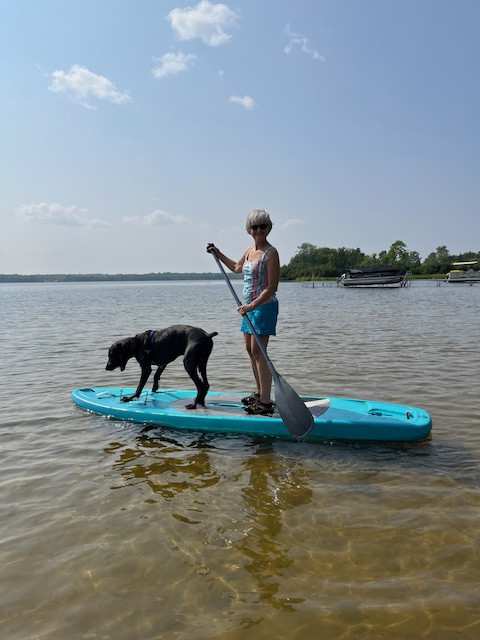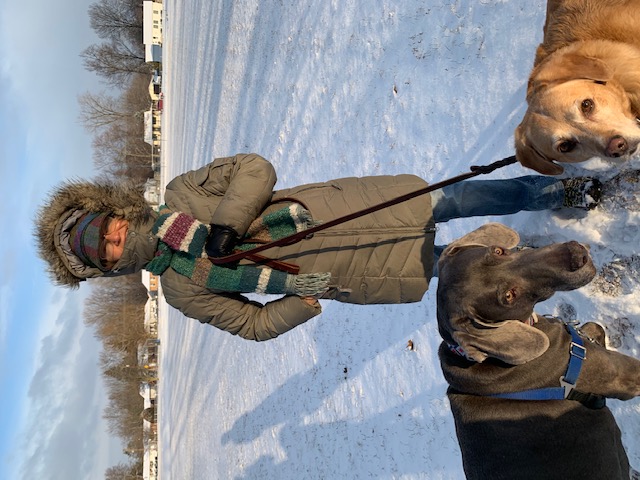May is Osteoporosis Prevention Month. . . .
 This is a subject that is a personal story, since osteoporosis is a diagnosis that I have and shared with my late father. Osteoporosis, or “porous bones,” is the weakening of bones caused by an imbalance between the bone building and bone removal process that occurs normally throughout life. Bone cells called osteoblasts build bone, while other bone cells called osteoclasts break down bone. In osteoporosis the re-modeling of bone no longer creates a strong structure – like a house built with balsa wood for its frame! In healthy individuals who get enough calcium, magnesium, vitamin D, K, trace minerals, phytonutrients and physical activity, bone production exceeds bone destruction up to about age 30, after that, destruction typically exceeds production. Unfortunately for myself, I inherited two of the genes (homozygous for both) that dramatically increased my chances for osteoporosis, plus being a petite Caucasian woman also adds to my risk factors. Of the estimated 100 million individuals with osteoporosis in the US, 75-80% are women, due to their lighter frames and the loss of the stimulatory effect of estrogen during menopause. Loss of testosterone and risk of osteoporosis generally occurs later in life in men (around 70) and is a gradual process as opposed to the sudden loss of hormones that occurs with menopause. A Dexa-scan to evaluate bone mineral density is necessary for a diagnosis of osteoporosis – a T-score of 2.5 or more below the young adult mean bone mineral density (BMD) is considered osteoporosis by the World Health Organization. Osteopenia is defined as a T-score of 1.0 to -2.4 below young adult BMD.
This is a subject that is a personal story, since osteoporosis is a diagnosis that I have and shared with my late father. Osteoporosis, or “porous bones,” is the weakening of bones caused by an imbalance between the bone building and bone removal process that occurs normally throughout life. Bone cells called osteoblasts build bone, while other bone cells called osteoclasts break down bone. In osteoporosis the re-modeling of bone no longer creates a strong structure – like a house built with balsa wood for its frame! In healthy individuals who get enough calcium, magnesium, vitamin D, K, trace minerals, phytonutrients and physical activity, bone production exceeds bone destruction up to about age 30, after that, destruction typically exceeds production. Unfortunately for myself, I inherited two of the genes (homozygous for both) that dramatically increased my chances for osteoporosis, plus being a petite Caucasian woman also adds to my risk factors. Of the estimated 100 million individuals with osteoporosis in the US, 75-80% are women, due to their lighter frames and the loss of the stimulatory effect of estrogen during menopause. Loss of testosterone and risk of osteoporosis generally occurs later in life in men (around 70) and is a gradual process as opposed to the sudden loss of hormones that occurs with menopause. A Dexa-scan to evaluate bone mineral density is necessary for a diagnosis of osteoporosis – a T-score of 2.5 or more below the young adult mean bone mineral density (BMD) is considered osteoporosis by the World Health Organization. Osteopenia is defined as a T-score of 1.0 to -2.4 below young adult BMD.
Prevention of osteoporosis is a life-long process, and is so important due to the high incidence of hip and spinal fractures that occur. Complications of osteoporosis cause mobility issues, pain syndromes, depression, long-term care placement and significant loss of quality of life. Let’s look at some of the ways to prevent osteoporosis and ways to support individuals with this diagnosis. This week I’ll examine lifestyle factors as it relates to osteoporosis, and next week I’ll cover nutritional support.
Lifestyle

1) Health in Youth –
Exercise and a nutritious diet during the growing years are crucial to reducing the risk of osteoporosis. Up to 90 percent of peak bone mass is acquired by age 18 in girls and by age 20 in boys. Unfortunately for many youth inadequate nutrition impacts the developing bone, either from poor food choices, eating disorders, or lack of access to healthy foods. In my personal history, I had a 20lb weight loss at age 17 from complications of wisdom teeth removal, and I was significantly underweight for 2 years.
2) Exercise / Strength Training –
Regular, consistent weight bearing exercise has been shown to increase bone mineral density at ANY age! Unfortunately many individuals with osteoporosis are advised not to engage in heavy lifting for fear of injury. Exercises such as lifting weights, stair climbing, jogging, elliptical machine or walking while wearing a weighted backpack will help stimulate new bone growth, keeping them dense and strong. Paddleboarding I discovered is a great balance and resistance exercise, and my dog enjoys it too! Despite my not so good T-score, I try to lift weights (not just 5-10lbs!) and include the elliptical machine for aerobic exercise. Of course, any program must be done gradually and I recommend working with a certified trainer or physical therapist for guidance.
3) Gardening –
Another enjoyable way to help your bones is to tend a garden – a large study through the University of Arkansas found that this activity was surprisingly the best overall at maintaining bone health. So go and plant a garden, because digging holes, pushing a wheelbarrow, pulling weeds, and moving bags of mulch or flower pots around while getting sunshine and Vitamin D will make you and your bones happy! I love to play in the dirt, always have!
4) Own a Dog –
I’m probably a bit biased on this recommendation, since I have 2 canine family members – but the evidence of research supports the fact that when you own a dog, you are improving bone health because of the care they require. A daily walk with your dog and the frequent bending that occurs to pet or feed them helps to strengthen bone mass, increases flexibility of joints which improves balance and spinal stability. In general, a dog actually will reduce your risk of muscular-skeletal injuries, including hip fracture.
5) Avoid Smoking and Alcohol –
People who smoke or drink heavily, absorb less calcium then they take in. Both smoking and alcohol can lower the levels of estrogen and testosterone which can accelerate bone loss. Smoking also interrupts the bone remodeling process, which can increase the risk of osteoporosis. My dad began smoking at age 14 and didn’t quit until age 69 – which unfortunately played a role in his development of osteoporosis.
6) Medical Conditions and Medications -
Certain medical conditions can increase the risk for osteoporosis such as celiac disease, diabetes, hormonal disorders, kidney failure, and malabsorption syndrome including enzyme deficiencies or low hydrochloric acid in the stomach. Having low stomach acid prevents absorption of many minerals, including calcium, magnesium and trace minerals necessary for bone building. As we age our stomach acid natural decreases! Studies have shown a link between long-term use of proton pump inhibitors (acid blockers) and greater likelihood of osteoporosis-related fractures of the hip, wrist, or spine. Other medications, especially corticosteroids, are associated with accelerating bone loss. When I was a teenager, I had frequent stomach aches, so I had a test where I swallowed a capsule ( now I know it was a Heidelberg Test) and it was determined that I had low stomach acid – but unfortunately no one treated this condition back then since functional medicine was not yet on the horizon. Of course now we can give an individual betaine HCL tablets or digestive enzymes to improve absorption. Maybe my osteoporosis could have been prevented!

